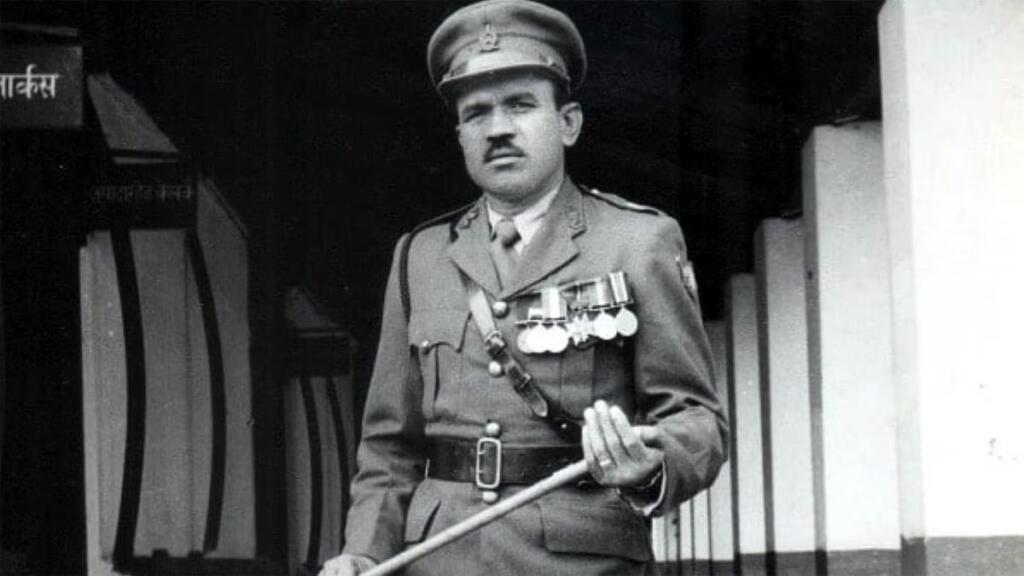Major Rama Raghoba Rane, PVC (26 June 1918 – 11 July 1994), was a distinguished officer in the Indian Army. Major Rane was awarded India’s highest military honor, the Param Vir Chakra (PVC), for his exceptional bravery during the 1947–48 Indo-Pak War.
Born in Chendia village, in the Karwar district of Karnataka, Rane’s early life was marked by his father’s transferable job, which led him to study in various parts of the country. At the age of 22, during World War II, he joined the British Indian Army, enlisting in the Bombay Engineer Regiment on 10 July 1940. He quickly rose through the ranks and became well known for his remarkable skills and leadership.
Rane’s first major military engagement came during the Burma Campaign in World War II. As part of the 28th Field Company of the 26th Infantry Division, he showed immense courage, notably during a retreat from the Japanese forces. He and his sections were tasked with destroying key assets behind enemy lines. When the expected evacuation by the Royal Indian Navy did not happen, Rane and his men expertly evaded Japanese troops, making their way back to their division. His decisive actions earned him a promotion to havaldar (sergeant).
After India’s independence in 1947, Rane transferred to the Indian Army, where his leadership skills stood out. In December 1947, he was commissioned as a second lieutenant in the Corps of Engineers. By 1948, India was embroiled in the first war with Pakistan over the Jammu and Kashmir region. Rane played a key role in the recapture of Rajouri, a critical area that had fallen into Pakistani hands.
In April 1948, Rane, then a second lieutenant, was assigned to the 37th Assault Field Company, which was supporting the 4th Dogra Battalion in its advance towards Rajouri. Pakistani forces had created significant obstacles in the form of roadblocks and mines that hindered the progress of Indian forces. Rane and his team were tasked with clearing these obstacles to allow the supporting tanks to move forward. On 8 April, while clearing a minefield, Rane and his men came under intense mortar fire, resulting in casualties, including Rane himself, who was severely wounded. Despite this, he continued his mission, bandaging his wound and leading his men to clear the road, allowing the tanks to advance.
Rane’s resilience was tested again the next day when, despite ongoing artillery and mortar fire, he worked relentlessly, sometimes under cover of tanks, to clear further obstacles. His section cleared mines, blasted open roadblocks, and worked tirelessly through the night, ensuring a safe passage for the battalion. The following days saw Major Raghoba Rane and his men continue their hazardous work, facing enemy fire and working for long hours under difficult conditions. On 10 April, Rane personally drove a tank to clear a major roadblock, taking cover behind the tank while blasting open the road. This allowed the 4th Dogra Battalion to continue its advance.
Rane’s courageous actions over the next few days were pivotal in the Indian forces’ success. His efforts led the road to Chingas to open, from where Indian forces advanced towards Rajouri. The brave actions of Major Rane were a significant factor that eventually led the Indian forces to re-take control of Rajouri and stop any further looting and killing that Pakistani forces may have carried out.
For being the most courageous, leadership-minded, and devoted-to-duty officer, Major Raghoba Rane was granted the highest military decoration of India, the Param Vir Chakra. He was the first living recipient of the PVC. His heroism and professionalism in the face of extreme adversity become a symbol of the Indian Army’s resolve and determination. Rane retired from the Army on 25 June 1968 after serving for 21 years. He died of natural causes on 11 July 1994.
Rane’s legacy as a phenomenal soldier and a real life hero stands out not only in the context of his exploits in Rajouri but also due to his total commitment towards his duty. Rane’s fine service fetched him five “Mention-in-Dispatches” with a special recommendation by the Chief of Army Staff. Major Raghoba Rane’s glorious story is a great chapter of exceptional bravery, leadership, and sacrifice, all in service for the nation.
